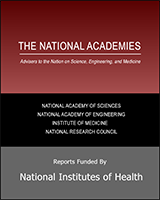From: 5, Managing BSAT Research and the Select Agent Program

NCBI Bookshelf. A service of the National Library of Medicine, National Institutes of Health.
The Southwest Foundation for Biomedical Research has been working with select agents since 1996 and housed the only operational academic BSL-4 laboratory from 2000 until the opening of the laboratory at the University of Texas Medical Branch at Galveston in 2004.
The laboratory’s research on vaccines, therapeutics, and pathogen detection spans multiple sponsors and agencies. This means that their facilities have been subject to inspection and oversight by an alphabet of government agencies. In recent years, the laboratory has been visited by representatives from CDC, HHS, USDA, DHS, Government Accountability Office (GAO), Environmental Protection Agency (EPA), Department of State, Department of Commerce, and the Department of Transportation, among others.
Multiple levels of oversight can cause conflict and confusion. For example, a 2008 GAO report cited the presence of a window in one laboratory as a security risk (GAO 2008), even though the placement of the window had been recommended by other maximum-containment labs and the windows were high above the ground, constructed with bulletproof glass, and equipped with bars (GAO 2009a). What is an entity to do when multiple authorities are not working from the same rulebook?
According to Dr. Jean L. Patterson, who chairs the Department of Virology and Immunology, the foundation estimates that the laboratory spends nearly one-quarter of its time and resources related to inspections.
The foundation has recently decided to discontinue its relationship with DHS, because of a combination of poorly trained inspectors and required compliance that far exceeded the funds provided. The foundation found that inspectors were requiring compliance with procedures that were not in line with recommended biosafety practices, were asking questions the foundation deemed inappropriate, and were asking for access to the BSL-4 laboratory, even though the inspectors had no familiarity or training in that environment. These aspects of inspection were deemed outside the norm of what is reasonable and prudent—and led to the conclusion that continued DHS funding did not outweigh the costs and challenges of complying with contradictory rules and expectations.
From: 5, Managing BSAT Research and the Select Agent Program

NCBI Bookshelf. A service of the National Library of Medicine, National Institutes of Health.